In Death and the Miser, a Dutch painting from around 1490, a hideous skeletal figure—a medieval version of the grim reaper—comes knocking at a man’s bedroom door. As death watches, the dying miser decides whether to accept a sack of money from a slithering demon or find salvation from an angel that appears in the room. The central question it seems to pose is: Should he save his money, or his soul?
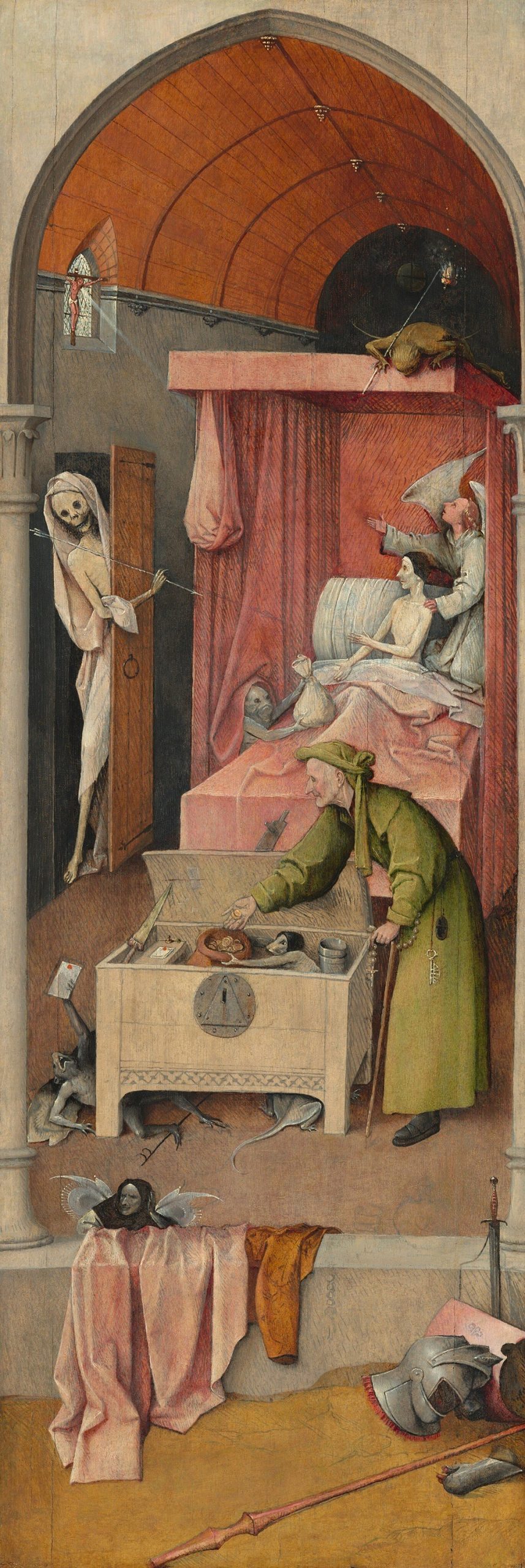
The richly detailed piece by Hieronymus Bosch illustrates some of the conflicted reactions to the early rise of free markets and greater access to money in the Middle Ages, which is the theme of a new exhibition at the Morgan Library in New York, on view now through March 10, 2024.
Medieval Money, Merchants, and Morality seeks to inform visitors about the rise of money in Western Europe from the late 12th century to the 16th century. Banks, currencies, and merchant trading grew, and early versions of capitalism and the free-market system were born. But that spurred moral quandaries about greed and the accumulation of riches among an elite few—mirroring the wealth inequities we see today as capitalism continues to dominate.
“There was a multiplicity of views around money in this period,” says Deirdre Jackson, assistant curator of medieval and Renaissance manuscripts, the on-site curator for this exhibition, adding that “money was widely recognized as problematic within medieval culture.” The aim is to portray this range of perspectives, as well as the ambivalence around the rise of capitalism.
If capitalism is defined by the production of goods for a market with the hope of profit, then it was in this era that the system came into being, according to economic historian Steven Epstein, who wrote an accompanying essay for the exhibition. A free market mercantile economy began to appear after the breakdown of the manorial economy, part of the feudal political system where lords owned land, and serfs worked it.
Between 1347 and 1351, the Black Death killed between 30% and 50% of Europe. That gave leverage to the far smaller number of peasants who could demand compensation for their labor. Many were gradually able to move to urban centers, and some became merchants trading in emerging city marketplaces. Eventually, this formed a middle class of people who weren’t noble by birth. “As the economy developed, it would have increasingly rewarded entrepreneurial people [and] ambitious risk-takers,” Jackson says.
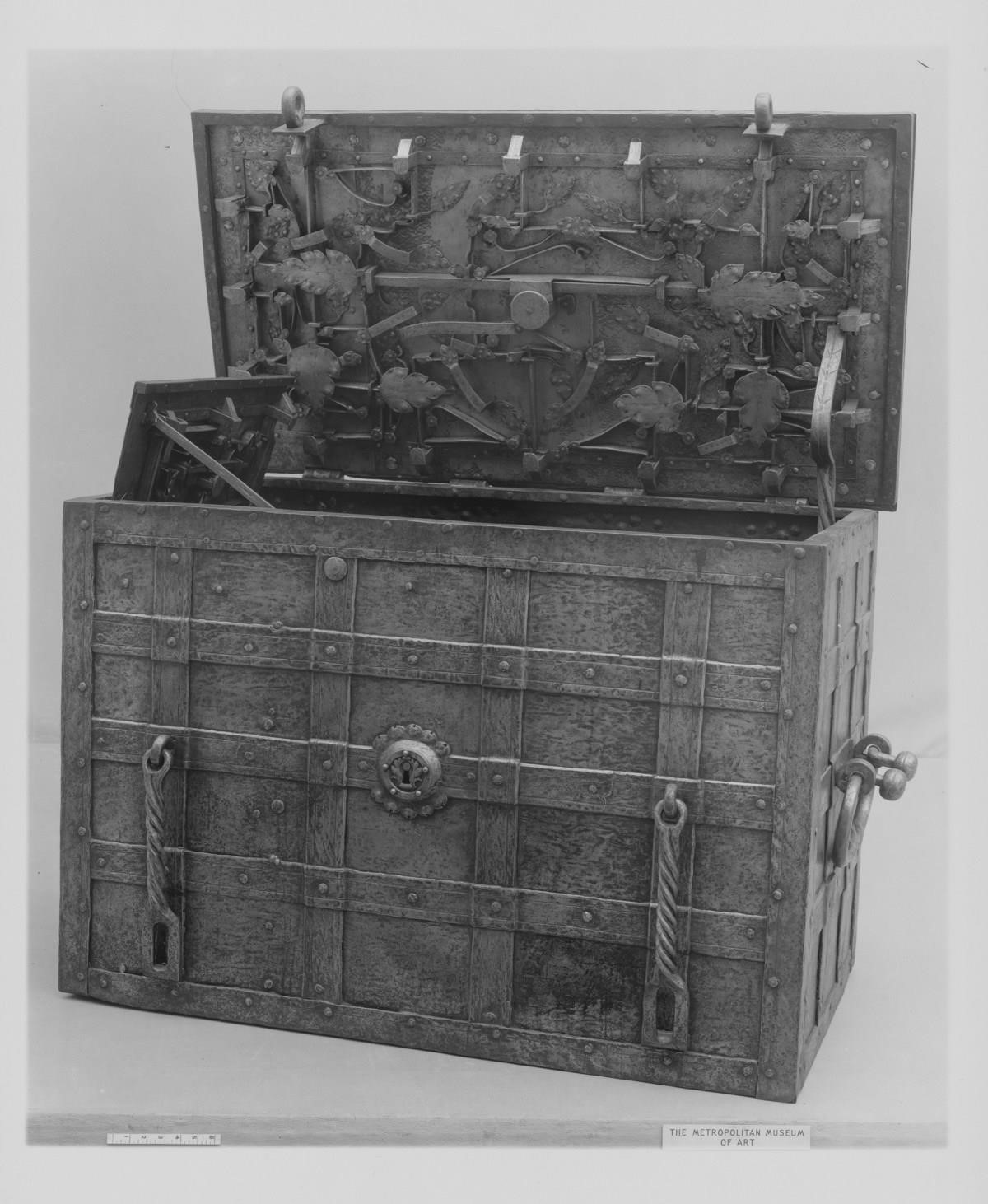
To assist with trading, banks were established for the first time, offering financial instruments like bills of exchange, bank transfers, and foreign-currency exchange, to support growing international commerce. People didn’t have to haul bags of coins as they traveled long distances. This was especially beneficial as regions developed their own signature commodities: raw wool in England, wine in France, textiles in Italy.
At the same time, lower-value coins, not made from gold or silver, began to be minted, permitting trade options for a wider swathe of people. As more coins circulated, more ordinary people were involved in the economy, which made it more robust. The exhibition displays some of these coins, such as torneselli, coins used in Venice’s Greek colonies for everyday transactions. There are also displays of fashionable coin purses for the belt, and weight scales used by banks to check the legitimacy of coins.
Though the new economy appeared more inclusive, it also served to propel some of the richest to the top as they amassed great wealth. The biggest artifact in the exhibit is an 800-pound steel strongbox from Germany, which would have been used to store vast amounts of riches within the home.
It’s juxtaposed with the Bosch painting of the miser torn between his money and his soul. This tension between material gain and spiritual fulfillment was a recurring theme. There were no safety nets, so the needy relied on philanthropy. Even savings were seen as selfish in contrast with today’s idea of money management being sensible and virtuous.
That’s clear in the many depictions of avarice, a major vice. One manuscript, the Hours of Catherine of Cleves, from Utrecht around 1440, shows paintings of a wealthy man being offered a final chance at redemption as he lies dying. Waiting for him, if he fails to make the right choice, is purgatory, shown by flames licking naked bodies as they burn inside a monster’s mouth. And as the man is dying, his son is digging into the strongbox. “The heir can’t even wait,” Jackson says. “He’s already got his hand in the pie.”
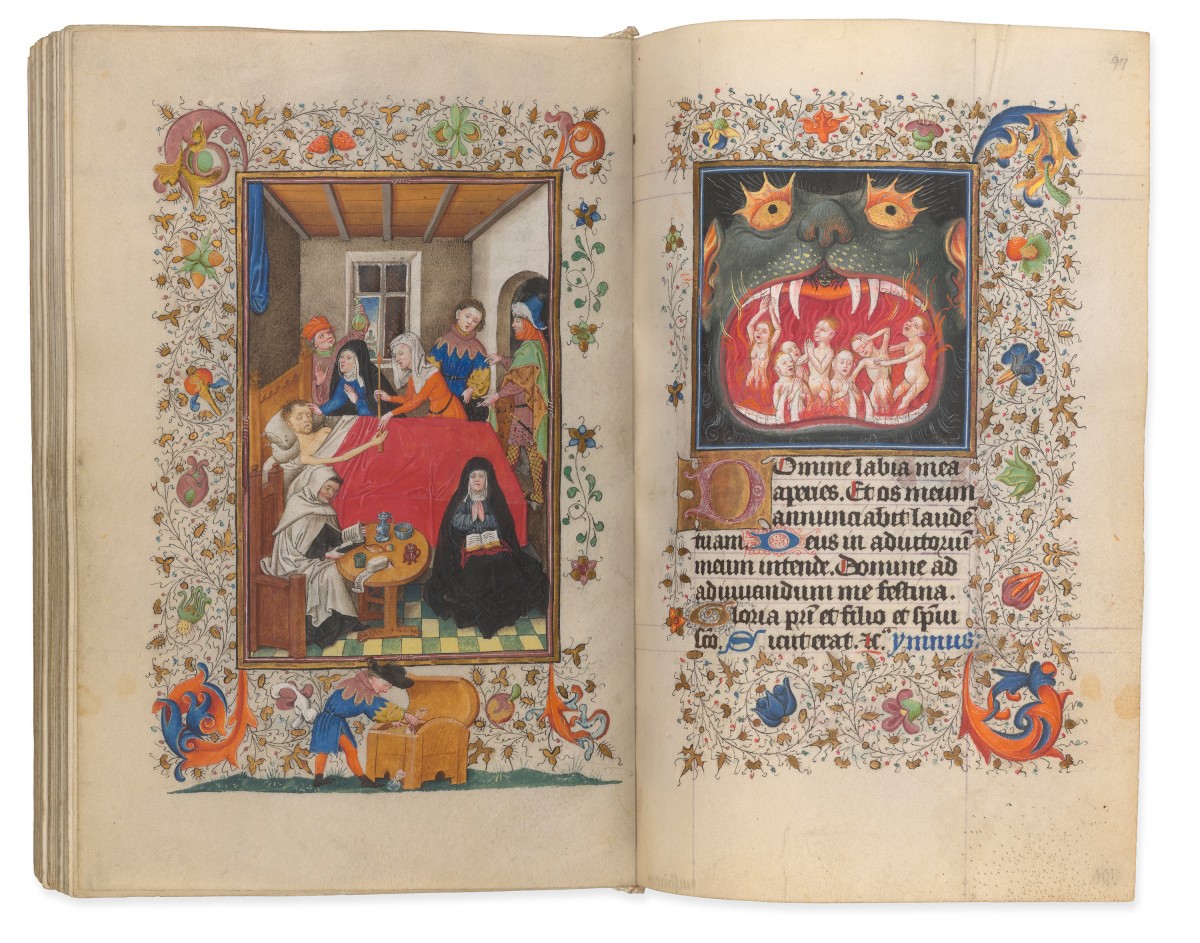
While some were enticed to get rich, others renounced wealth completely. A painting by a Dominican friar shows the feats of mental strength of Saint Anthony Abbot, a Christian monk from Egypt, who banished himself to the wilderness to escape the temptation of money. The devil constantly tempts him by offering boulders of gold, but Abbot resists.
One of Jackson’s favorites is a painting of Saint Francis from around 1500. Francis chooses not to follow in his textile merchant father’s footsteps and continue the family business, instead relinquishing his wealth. In the painting, a confrontation with his father, he is shown stripping off his opulent garments in favor of a rudimentary habit. “He was questioning the ethics of a society in which there was such disparity in wealth and access to resources,” Jackson says. “For the time, that was really a radical thing to do.”
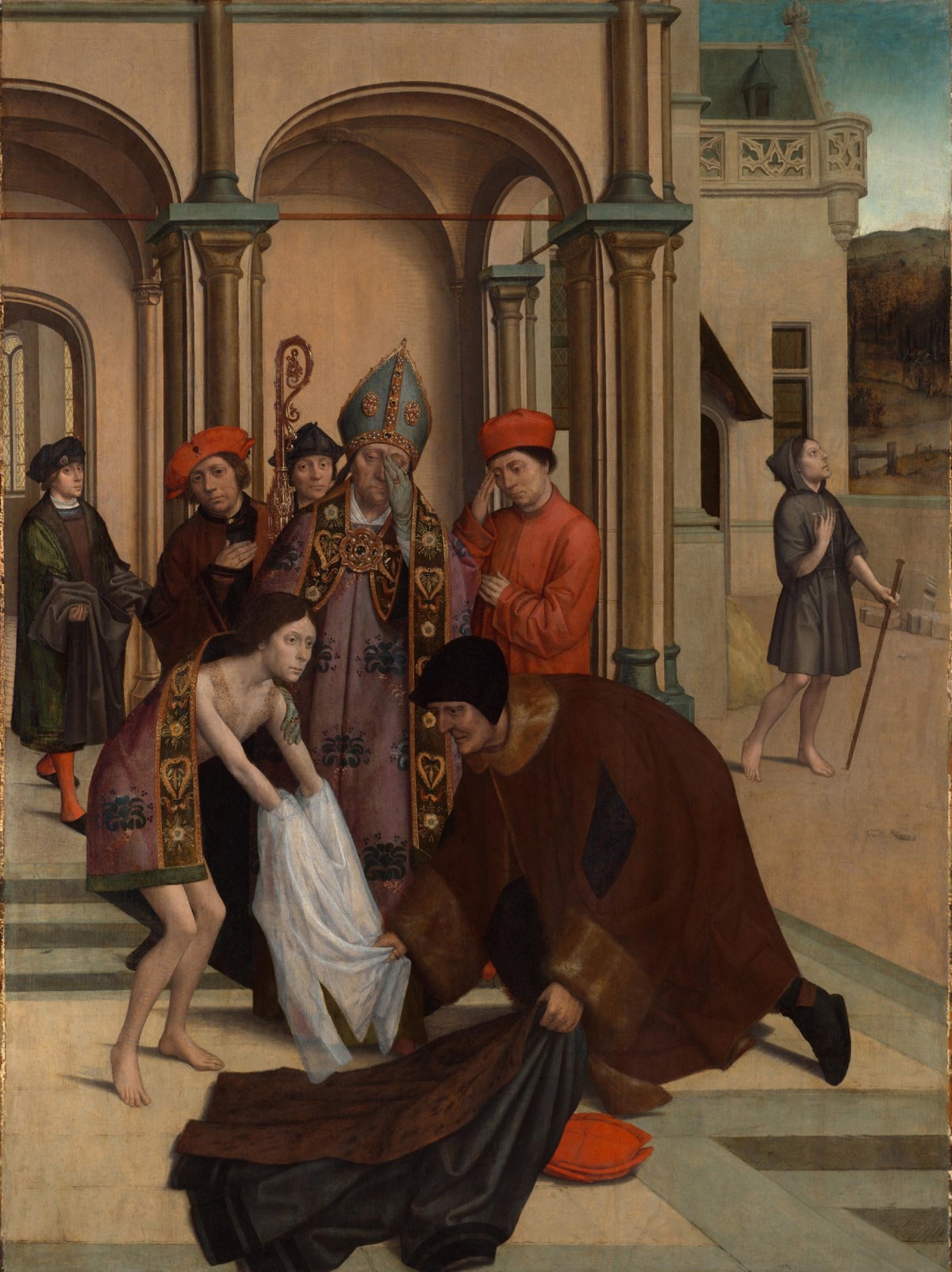
Others understood that they could use the power of money to do good. The exhibition displays a Dutch almsbox from the 1400s, which would have kept money to be donated to the poor and needy, a tenet of Christianity. Another oil painting from Italy shows a couple giving food to the poor, and keeping only a third of their income, with the rest going to the poor and the Church.
It’s been a story throughout the ages. There’s no irony lost that the exhibition is at the former home and library of American financier J. Pierpont Morgan, of J.P. Morgan & Co., who spearheaded the formation of General Electric in 1891 and of U.S. Steel in 1901—the first billion-dollar corporation. At the time, Morgan was the richest man in the world, worth $60 billion in today’s money at the height of his wealth. To some, he represented a captain of industry; to others, one of the infamous robber barons. As in the Middle Ages, the Gilded Age presented fundamental questions about the fairness of capitalism.
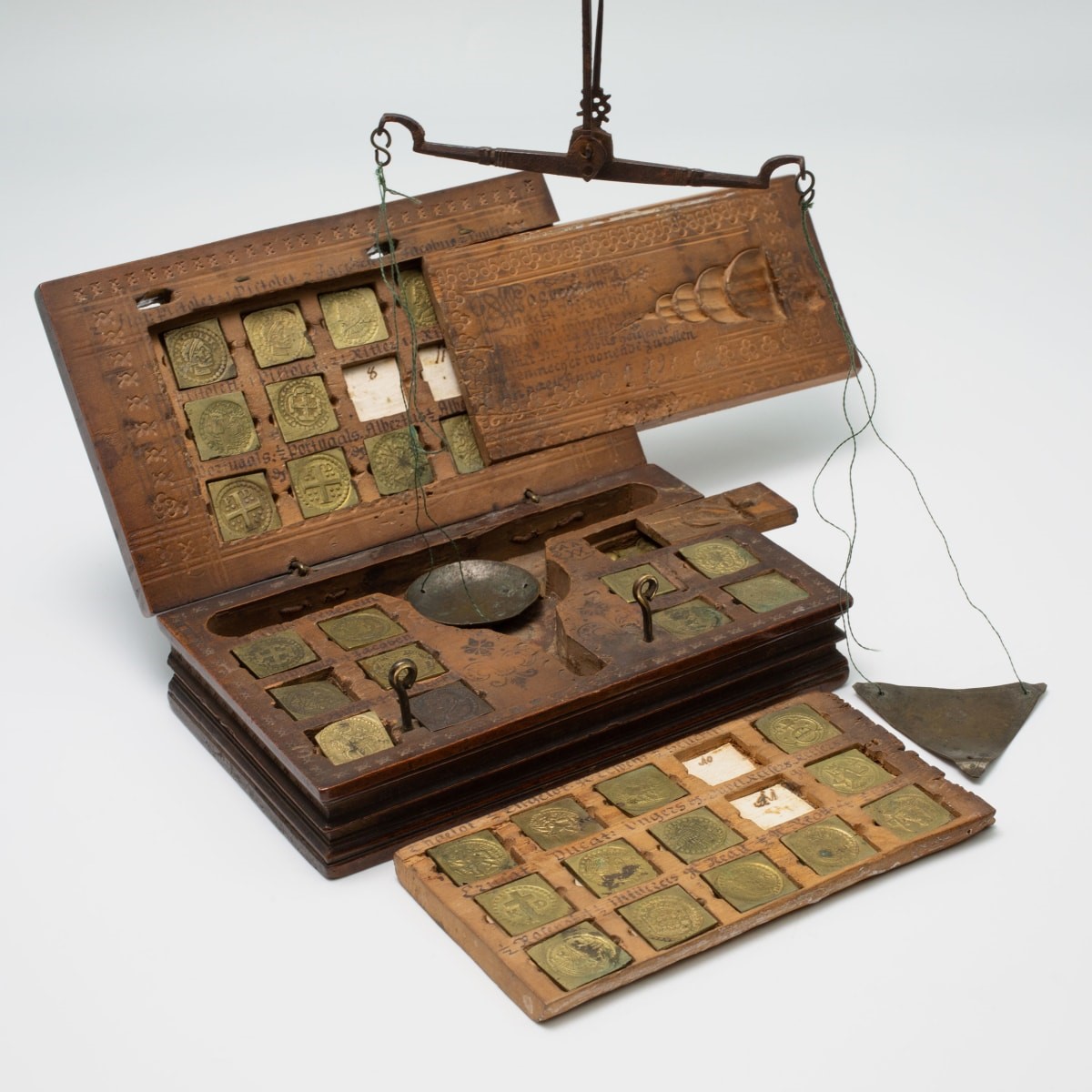
And there are stark parallels with today’s concerns about unchecked capitalism and the growth of the billionaire class. Research has suggested that our current society is just as unequal as in 14th-century Europe. Today in the U.S., the top 5% of families’ incomes have grown faster than all others, while the median net worth of the middle class has dropped 20% this century. Upper-income households were worth 75 times those of lower-income households in 2016, up from 28 times in 1983.
Jackson notes that the problems caused by expanding capitalism in the Middle Ages led to examinations of the system’s value. “If that type of behavior had not been widespread, the Franciscans probably wouldn’t have found the need to reject the monetary system, and to challenge the ethics of the market economy that sanctioned profit and wealth,” she explains. But centuries on, it’s clear that such scrutiny hasn’t led to any real solutions to reining in excess wealth or distributing it more equitably.
(37)